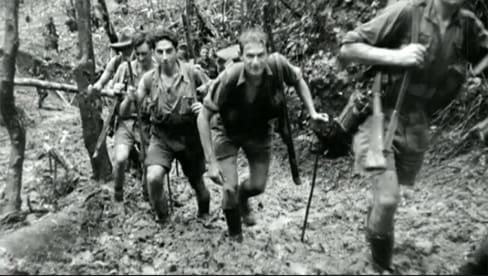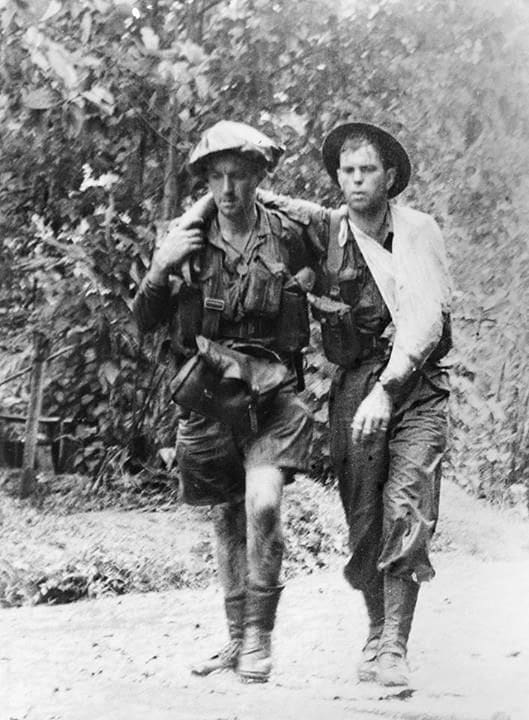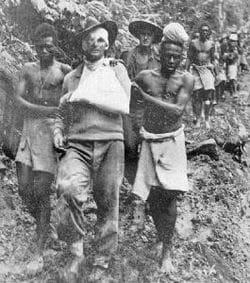The 3rd of November is Kokoda day or Kokoda Track day in Australia. The Kokoda Track Campaign was mainly fought between the Australians, and the Japanese, with the Americans helping at first with supplies and then with troops. The Australian troops had to save Port Moresby from being captured by the Japanese because Papua New Guinea would have been a great staging point for Australia’s invasion.

The Australian forces fought exceptionally well in the harsh and unforgiving jungle of the Kokoda Track. More than 600 Allies were killed, and about 75% of the allied troops got sick, with diseases like malaria, dengue fever, and dysentery. The campaign consisted of a series of battles fought between July and November 1942 in what was then Australian Papua New Guinea. The Australian Army halted the furthermost southward advance by Japanese forces in Papua New Guinea and then pushed the enemy back across the mountains. Kokoda was one the most significant battles fought by Australians in the Second World War, first because it was fought so close to home, second because it was kind of Australia’s birth as a prominent player on the world stage. The Kokoda campaign saved Australia from possible invasion from the Japanese. Port Moresby held a tactical position, and preventing the Japanese from reaching it was vital. The battle was fought over five months, and the odds were stacked heavily in favor of the Japanese. They outnumbered the Aussies 5-1, had much better equipment, and a lot more of it, and at the time, they were considered by many the best jungle fighters in the world. The astounding feats performed by the diggers soldiers to hold off the Japanese and turn them back lead to the growth of Australia as a nation.

The Kokoda Track started as many small trails used as mail routes and to supply settlements around Kokoda. The military modified it. It became the main route that linked Ower’s Corner, 40 kilometers north-east of Port Moresby, and the small village of Wairopi, on the northern side of the Owen Stanley mountain range. But it was a lot more than 40 kilometers within walking distance because you had to take the jungle into account. The soldiers were challenged by steep, treacherous inclines, deep valleys, dense jungle, a debilitating climate, and drenching rain that frequently turned the ground into that jungle mud that sticks to everything just by looking at it.

The Australians fought against all odds and without the help of Great Britain. It was fought mainly by Militia (reserve) troops or “chocolate soldiers” as the Australian Imperial Forces (AIF) called them because they were poorly trained, and it was said, “they would melt in the heat of battle.” At the start of the war, Australia sent its best troops, the AIF, to the middle east to help the brits. So, Australia stood up a Militia Battalions to serve in Australia, to help protect the homeland.

The 39th was only to be used on mainland Australia, but the government used a loophole saying that Papua New Guinea was a territory. Hence, they sent the 39th Militia there to help protect the island. This was one of the hardest fought battles in WW2 by anyone. I have attached a couple of links so you can read about this. As many military units are getting back into the jungle, this is full of instrumental lessons learned and is an excellent piece of history that should not be forgotten by any side. So, this week stop for a minute or raise a beer to the diggers and all the people that have made the ultimate sacrifice for freedom everywhere and have gone before us.
Long Live the Brotherhood.


Good to see an article on this but…
“The Australians fought against all odds and without the help of Great Britain.”
Not quite: the UK aided in any way it could. Material, technology, information, specialized staff, local RN detachments.
“It was fought mainly by Militia (reserve) troops or “chocolate soldiers” as the Australian Imperial Forces (AIF) called them because they were poorly trained, and it was said, “they would melt in the heat of battle.””
Or a reference to the brown pugaree Militia troops wore.
Recall in the interwar years the Oz military ground forces were all Militia with the exception of few HQ & cadre staff at national level.
“At the start of the war, Australia sent its best troops, the AIF, to the middle east to help the brits.”
The AIF was recruited from local populations & Militia members who had resigned from the Militia: by law Militia members could not serve overseas. Say in North Afrika, Greece, Malaya etc.
“Australia stood up a Militia Battalions to serve in Australia, to help protect the homeland.”
Nope- the Militia Inf Bn already existed. Some were better than others.
Linz,
So OZ did fight with out the UK, that is a general statement. When that is said it means UK troops as the US was pouring troops and material into that area most if not all supplies came from the US.
As for the chocolate troops, all militia were called that as slang term and yes it could mean more than that but the AIF used it more to down grade them. So again true statement.
As for AIF being gone, the UK made all Oz troops leave to help in Africa as the UK needed all the help they could get there and when they had left Japan had not attacked Pearl Harbor yet and yes OZ had to push more militia troops tru training to help defend main land OZ and they didn’t want to send any away. The AIF troops were held back to protect OZ. SO they had to stand up new troops to help.
Ted,
Lots to argue here.
I’m not sure where you got your last paragraph from.
Look at the deployment history of 9th Division for a start.
Cheers,
Linz
Thanks for the feedback. Have a good Kokoda day
Thanks…and recall Halloween is also Beersheba Day.
Trick? A lecture on The Charge.
Treat? fresh made Army Biscuit with condensed butter & jam
You are good at lecturing and no thanks on that treat. Treat and Army biscuit should never be in the same sentence.
As the Brits might say: ‘Slip them up a treat’